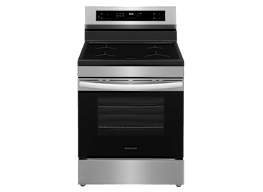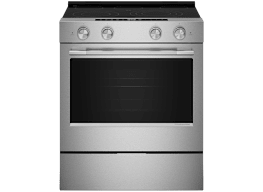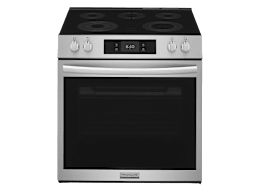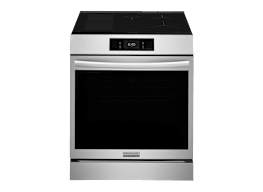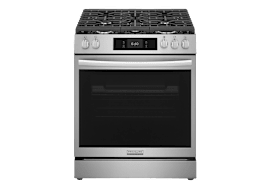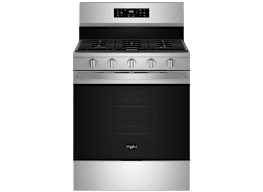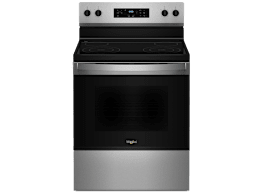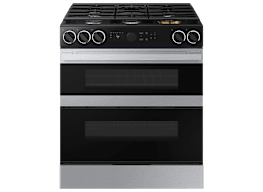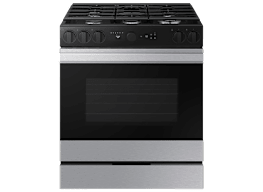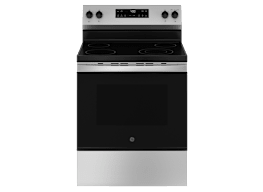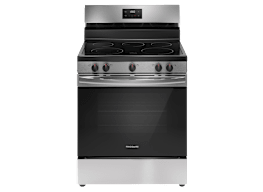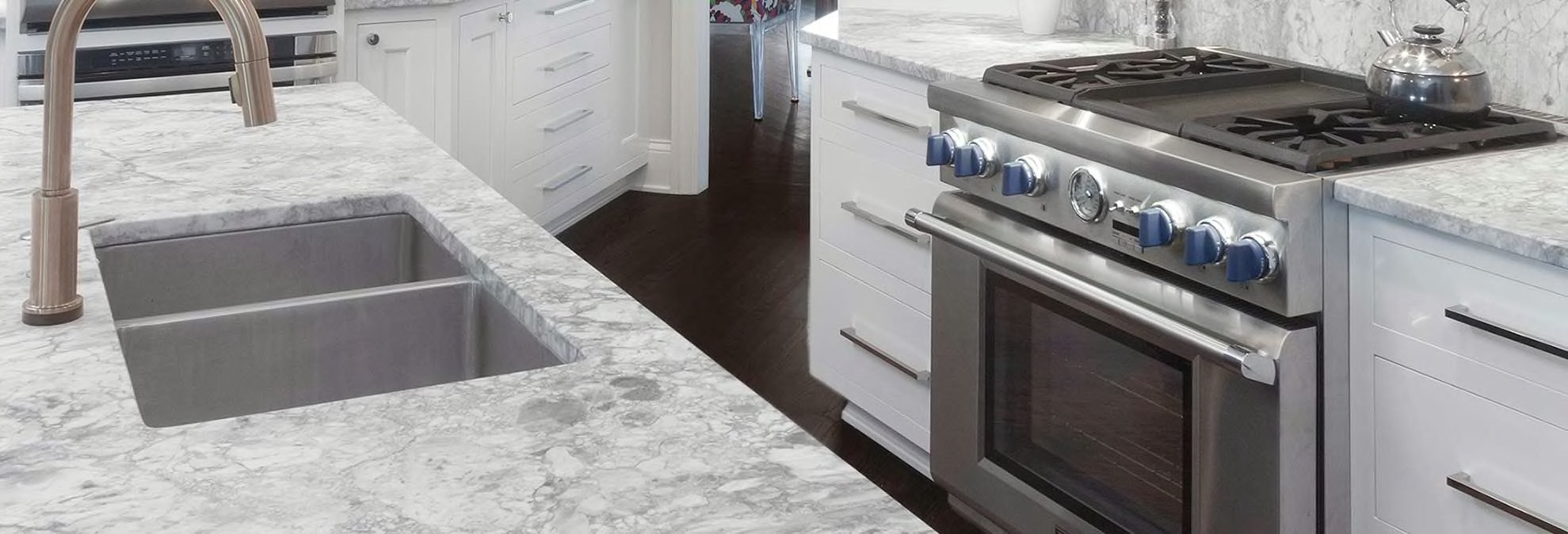
Kitchen Range Buying Guide

Senior Home & Tech Writer
Your range is the centerpiece of the kitchen, the workhorse that you might use for every meal. If you’re shopping for a new range, the type you buy—gas, electric, or induction—is partly dictated by your home’s setup. Gas ranges require you to have either natural gas or propane service, while an electric or induction range will work as long as you have a 240-volt electric line in your kitchen. (If you don’t, you’ll need to pay an electrician to install one.)
Whichever style you need or prefer, you’ll find plenty of options to consider. In this guide, we’ll cover the details you’ll need to know when buying a range, as well as the lowdown on major brands you’re likely to encounter while shopping. Once you decide which features matter most to you, take a look at our comprehensive range ratings, which allow you to sort through over 200 models by type, price, and more.
Range Types
Most ranges are electric or gas. Induction ranges are a type of electric range. Pro-style ranges are either gas or dual-fuel, which means they pair a gas cooktop with an electric oven. But you might also find a few dual-fuel ranges that are not pro-style models. Here’s what you need to know about the main categories when buying a range.
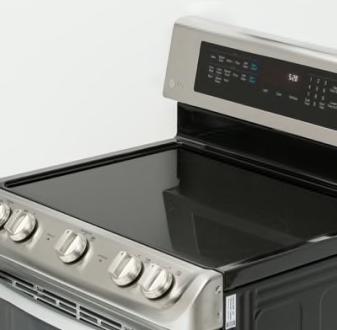
Electric Smoothtop Ranges
Ranges with radiant electric smoothtops, which have electric heating elements hidden beneath a layer of flat glass, are a popular pick. All the models in our tests have at least one high-power burner. Most have expandable dual or triple elements that let you switch from a large high-power element to a small, lower-power element within it. Some ranges have a warming element in the center to keep side dishes warm.
A downside to radiant electric models is that they hold a lot of residual heat, so after reducing the temperature, burners will take a few minutes to settle at the lower setting.
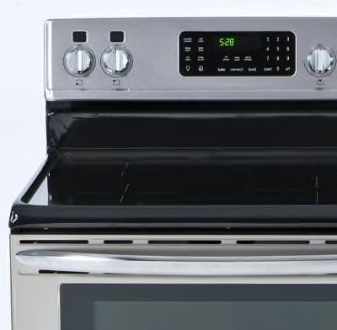
Induction Ranges
Induction ranges run on the same electric line as a regular electric range but use magnetic coils below the ceramic glass surface to send electromagnetic pulses that transfer energy directly to your cookware. Food on induction ranges boils faster and simmers more steadily than on a regular electric cooktop, and any adjustment you make to a burner happens quickly. If you’re transitioning from other types of cooking surfaces, consult our complete guide to induction cooking.
You’ll need magnetic cookware for an induction cooktop—but that’s not as difficult as it sounds. If a magnet strongly sticks to the bottom of a pot, the cookware will work with an induction range. You might already have stainless steel or cast-iron cookware that’s induction-capable. Read our guide on determining whether cookware is induction-friendly, as well as our take on the best pots and pans for induction surfaces.
If you’re in the market for an induction range, read our summary of the pros and cons. Induction cooktops have typically been more expensive than conventional electric cooktops, but prices have come down recently.
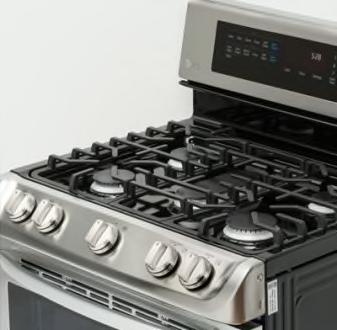
Gas Ranges
Because you can see the flames, a gas range provides a level of sensory feedback that electric models just can’t match. You can see how much heat the burner is putting out. Most gas ranges have four or five burners of different sizes, typically with at least one high-power burner and one simmer burner.
Response time with gas ranges is particularly quick, especially when compared with a radiant smoothtop. When you turn the knob from high to medium on a gas cooktop, the pot—and the food in it—feels the change in heat almost immediately. But believe it or not, gas burners—even high-power ones—tend to be slower to bring water to a boil than electric smoothtops and induction cooktops. One advantage in a power outage: Most gas burners let you strike a match to light them when your electricity is off.
Consumer Reports has undertaken testing to measure levels of potentially dangerous gases produced by gas ranges. In our evaluations, we’ve found that in some cases, these ranges can emit worrisome levels of nitrogen oxides, even with only a single burner in use. So when cooking with a gas range, make sure to create as much ventilation as possible by activating your range hood and opening windows and doors.
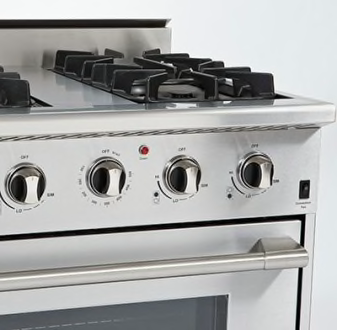
Pro-Style Ranges
Pro-style ranges in our ratings are either gas or dual-fuel, meaning they partner gas burners with an electric oven. They tend to be built with heavy-gauge stainless steel, well-insulated ovens, and continuous cast-iron cooking grates. These luxurious features often come at a high price.
Many regular ranges now offer features once unique to pro-style models, such as high-power burners, dedicated simmer burners, and convection, for a fraction of the price. In fact, the best gas and electric ranges in our ratings outperform the best pro-style models.
Some regular ranges may even offer more features than pro-style ones. Even basic conveniences found on a regular range, like a digital oven display or a preheat light, are often missing on pro-style ranges.
That being said, the best pro-style models are impressive pieces of industrial art. If that leaves you feeling empowered in the kitchen, a pro-style range might still be a good option for you.
Range Features That Matter Most
Once you’ve decided on a range type, consider the following factors to select a model that fits both your floor plan and cooking needs.
Freestanding vs. Slide-In Ranges
Freestanding ranges are the most widely sold and easiest to install. The controls are on a panel at the far end of the range. Slide-in ranges slip in between cabinets and appliances to give a custom, built-in look. Controls sit at the front of the range, so your backsplash can be showcased. The sides might not come finished, though, so a slide-in range might not work well as a replacement for a freestanding unit.
Range Width
Most gas, electric, and induction ranges are 30 inches wide. But a pro-style range can come in larger sizes. Some are even as wide as 48 inches if you custom-configure them with extra burners, an additional oven, or an integrated grill, griddle, or wok burner. (In our labs, we test 30-inch and 36-inch pro-style ranges.)
Oven Capacity
A roomy oven comes in handy when baking or entertaining. So assess the oven cavity in person if you can, or check the capacity scores in our range ratings. Note that we list only the usable oven space. Our measurements will give you a realistic sense of an oven’s actual sizes, while some manufacturers report dimensions that include the useless space below the lowest rack position.
Single-Oven vs. Double-Oven Ranges
Many ranges now come in single- and double-oven configurations. Double-oven ranges often have a smaller oven on top and a larger one below. They’re great for baking or roasting two different foods at different temperatures. Or you can activate just the smaller upper oven to save time when you’re preheating for small items, like a pizza. But you’ll need to bend farther down to cook foods in the lower oven because the door for the larger oven is closer to the floor than that of a conventional oven. To explore other issues concerning double ovens (such as the absence of a storage drawer), see our guide to double-oven ranges.
Gas vs. Dual-Fuel Ranges
Some gas ranges are dual-fuel—they use gas for the cooktop and electric power for the oven. Electric ovens tend to be drier and more even in their heating, which is a boon to bakers. The downside is that you’ll need both a gas and a 240-volt power hookup because you’ll be using both systems at once.
Common Kitchen Range Features
Some models tout bells and whistles that can save time and boost convenience. But usually, the more features, the higher the price.
- 1
- / 8
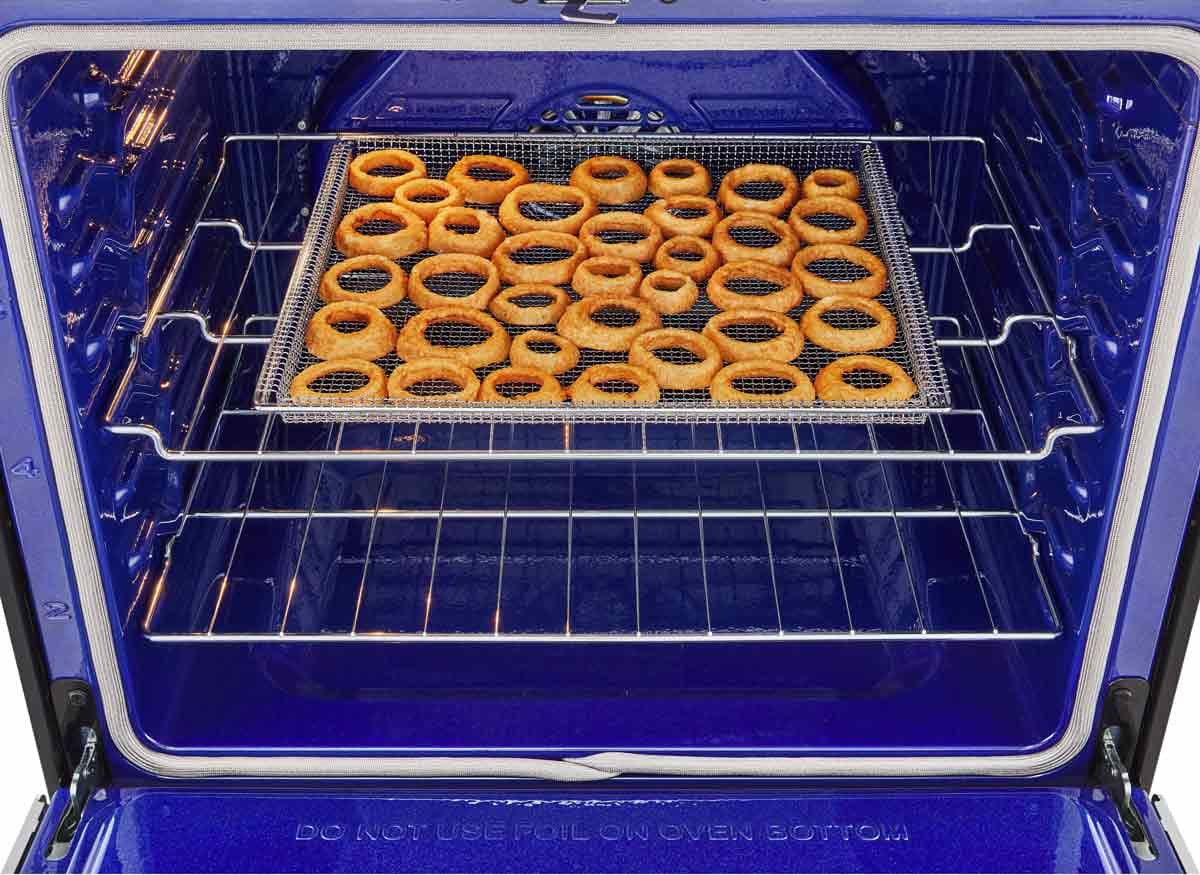
Air Fryer
Almost every major range brand now has at least one model with an air-fry setting. It usually engages multiple fans to circulate hot air, much like a countertop air fryer. Some brands also include (or sell) wire mesh cooking baskets to maximize circulation, which come in handy if you’re whipping up homemade fries.
Photo: LG
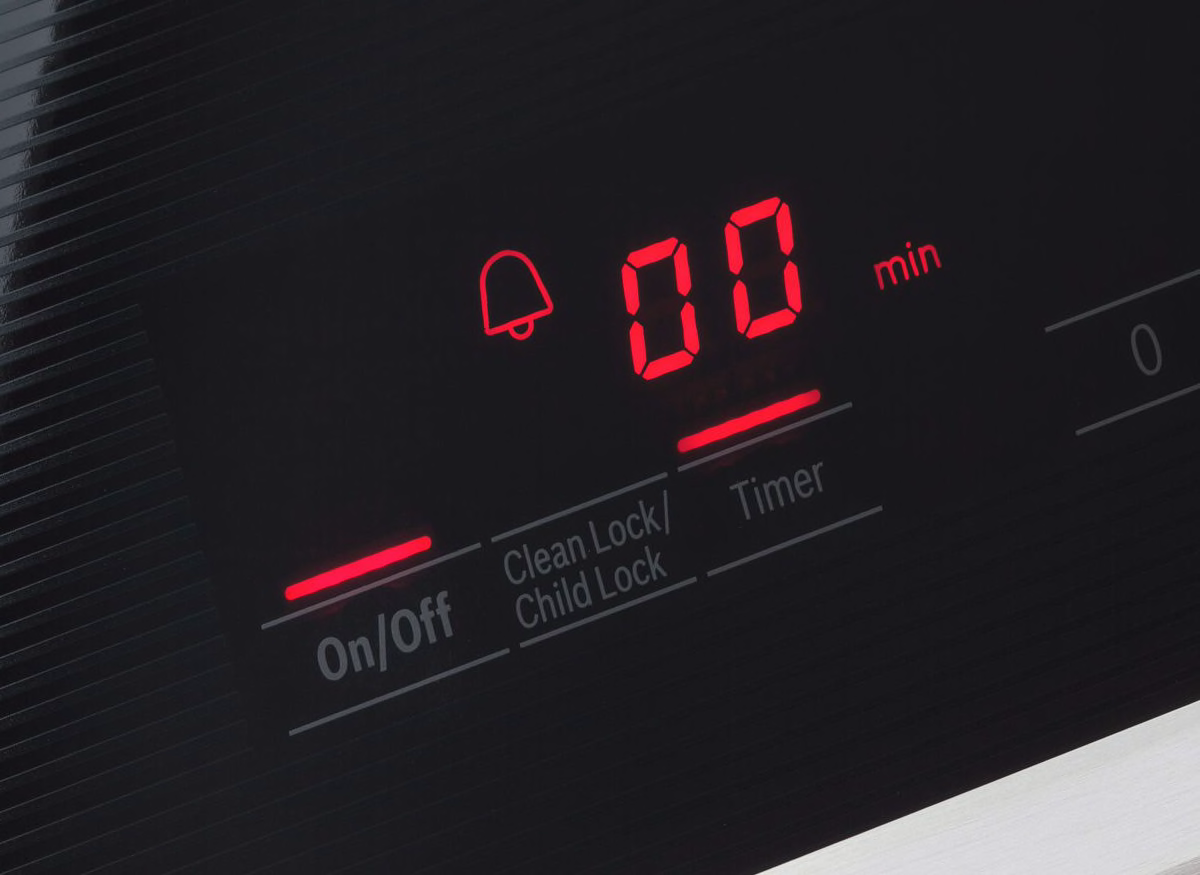
Control Lockout
This feature lets you disable the electronic range controls. We recommend it if the control panel is at the front of the range. These ranges are more likely to be turned on by accident, especially if you have young children in the house.
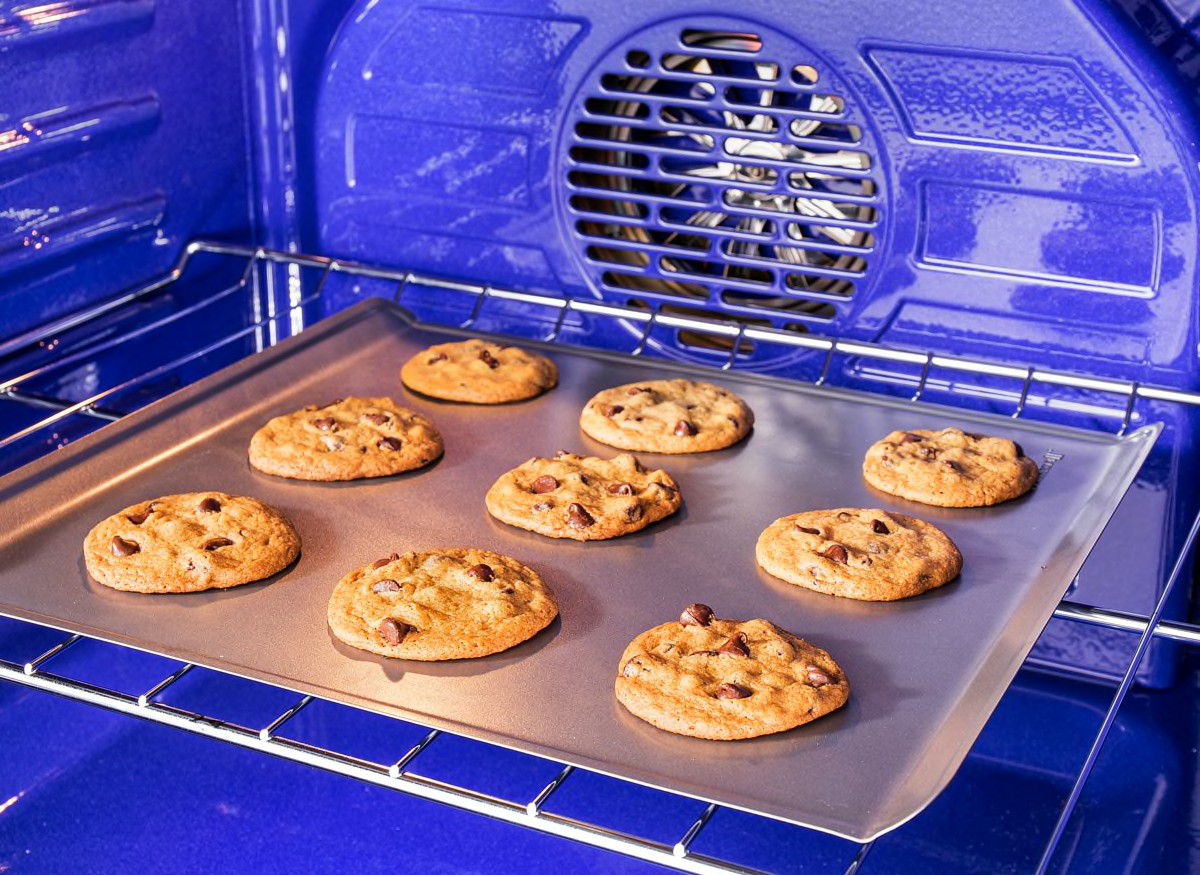
Convection
More typically found in mid- and higher-priced ranges, a convection oven usually reduces cooking time, especially for large roasts, by using one or more fans to circulate hot air in the oven. Some ovens—typically electric models—have an extra convection heating element so that the convection fan is circulating the hottest air possible for more even results.
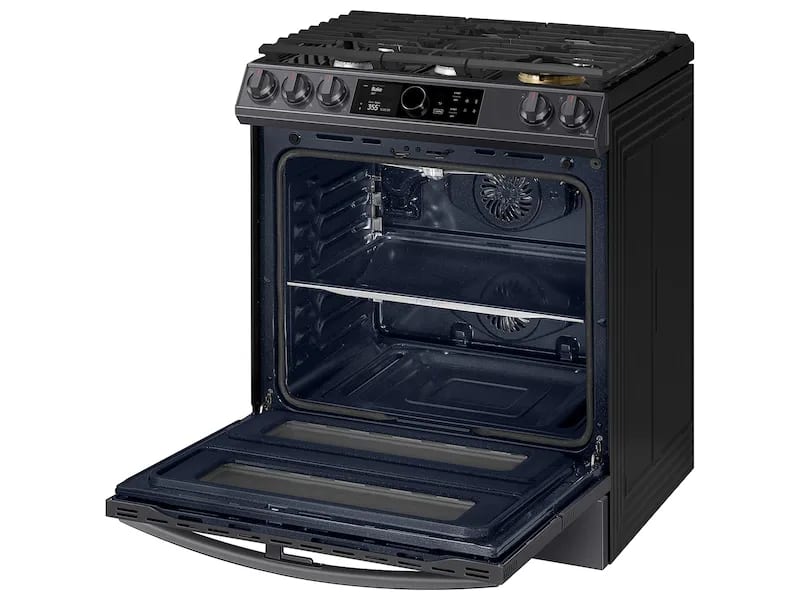
Convertible Oven Space
Some ranges, notably those from Samsung, have the ability to add or remove a divider between the upper and lower ovens. Samsung calls this Flex Duo, and it gives you the flexibility to switch easily between a huge baking space (for an enormous holiday roast) and a much smaller one (for a single sheet of cookies).
Photo: Samsung
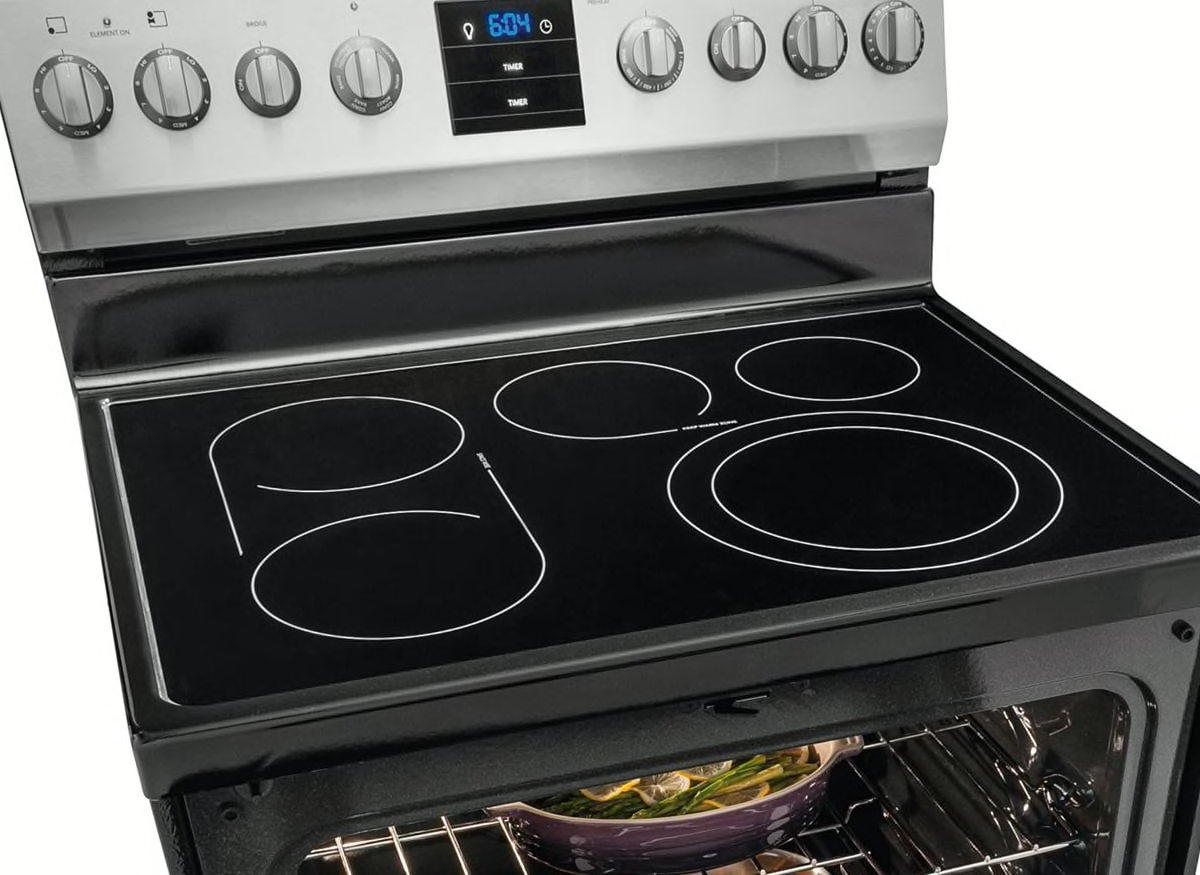
Expandable Elements, Bridge, and Oval Burner
On gas cooktops, oval burners accommodate griddles and elongated pans. And some electric range tops have an elongated bridge element that spans two burners to fit a griddle or other odd-shaped cookware. Most electric radiant and induction smoothtops have an expandable burner that lets you choose the best size for your pot’s diameter.
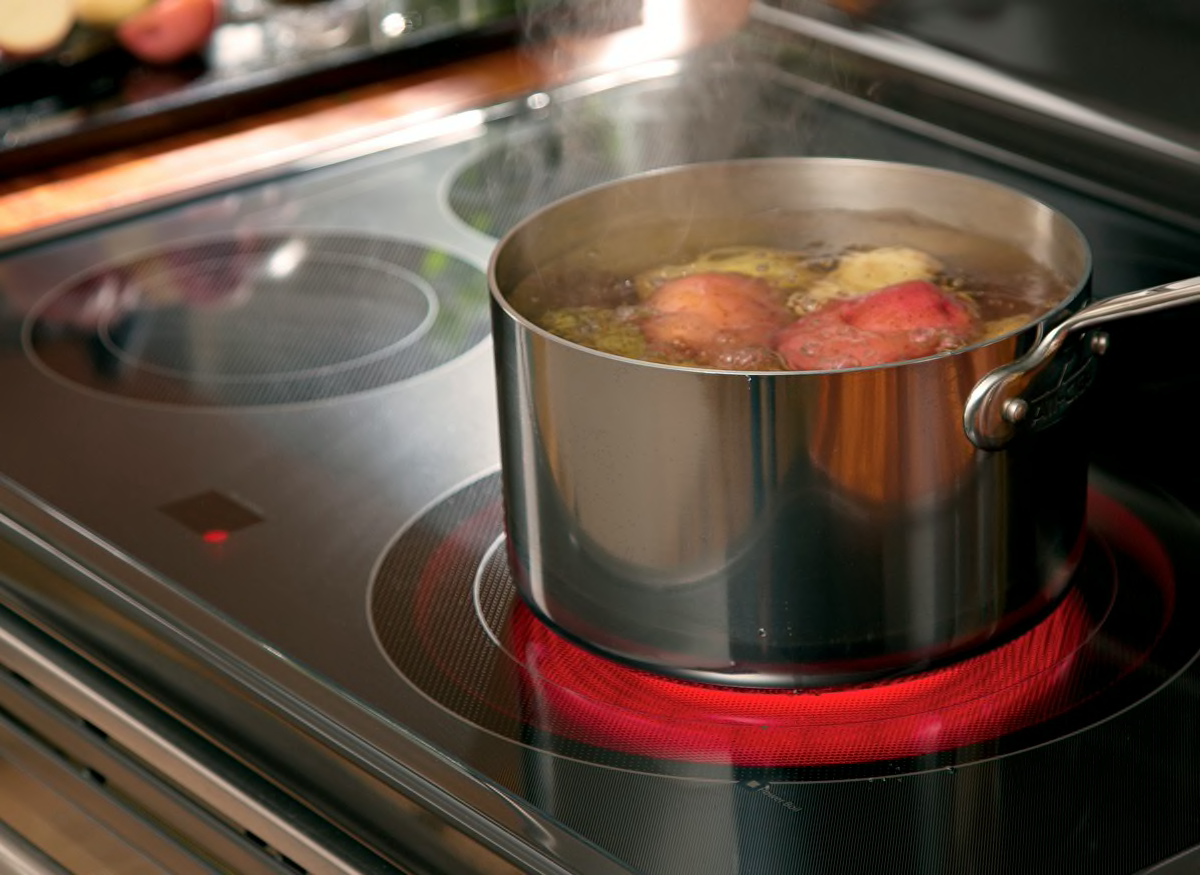
Hot-Surface Warning Lights
This light warns you when an element is still hot. That’s particularly useful on electric radiant smoothtops and induction ranges, which don’t emit a visible flame. (Although induction burners don’t heat up on their own, touching an area where a hot pan had been recently placed can still cause a burn.) Some ranges have a warning light for each burner; others have just one.
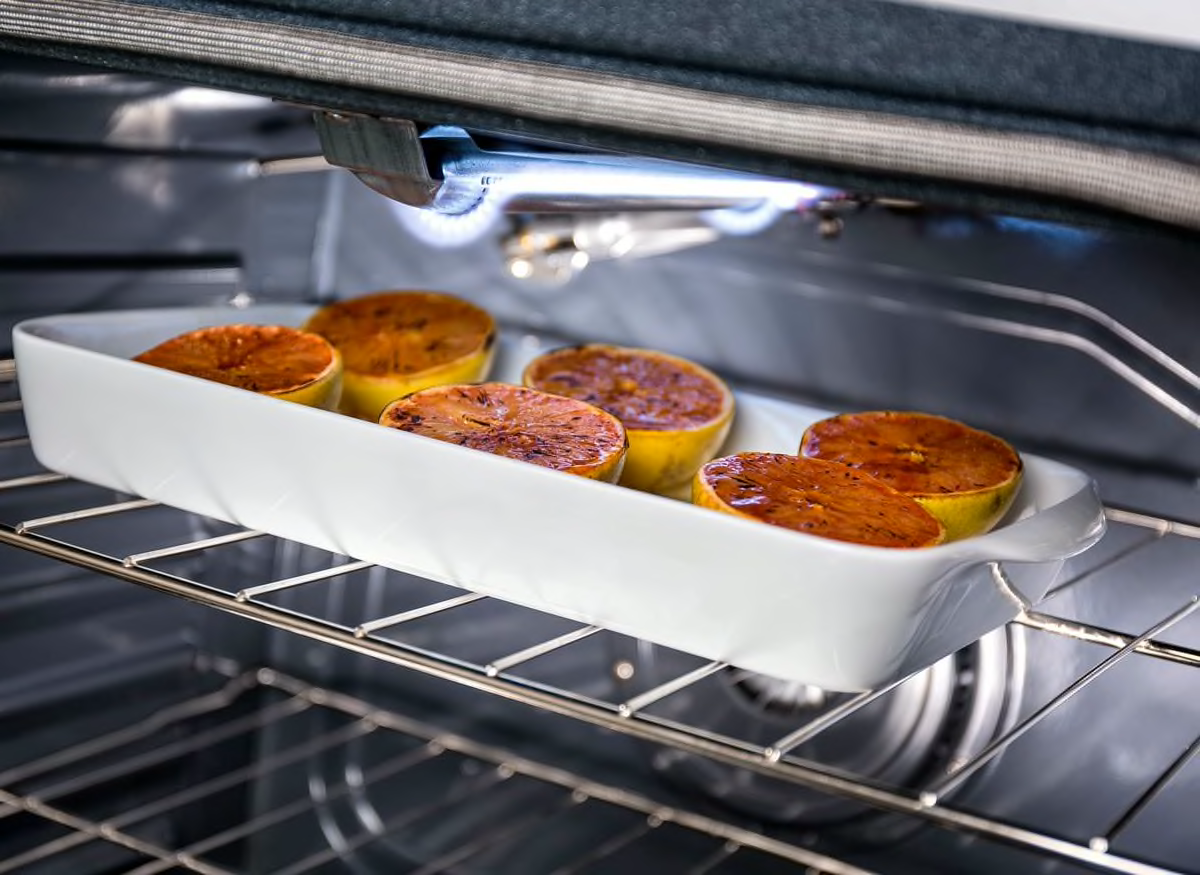
Variable Broil
Ovens with variable broil provide adjustable low and high settings for food that needs slower or faster cooking. Most electric and gas ovens have this feature, except for some entry-level models.
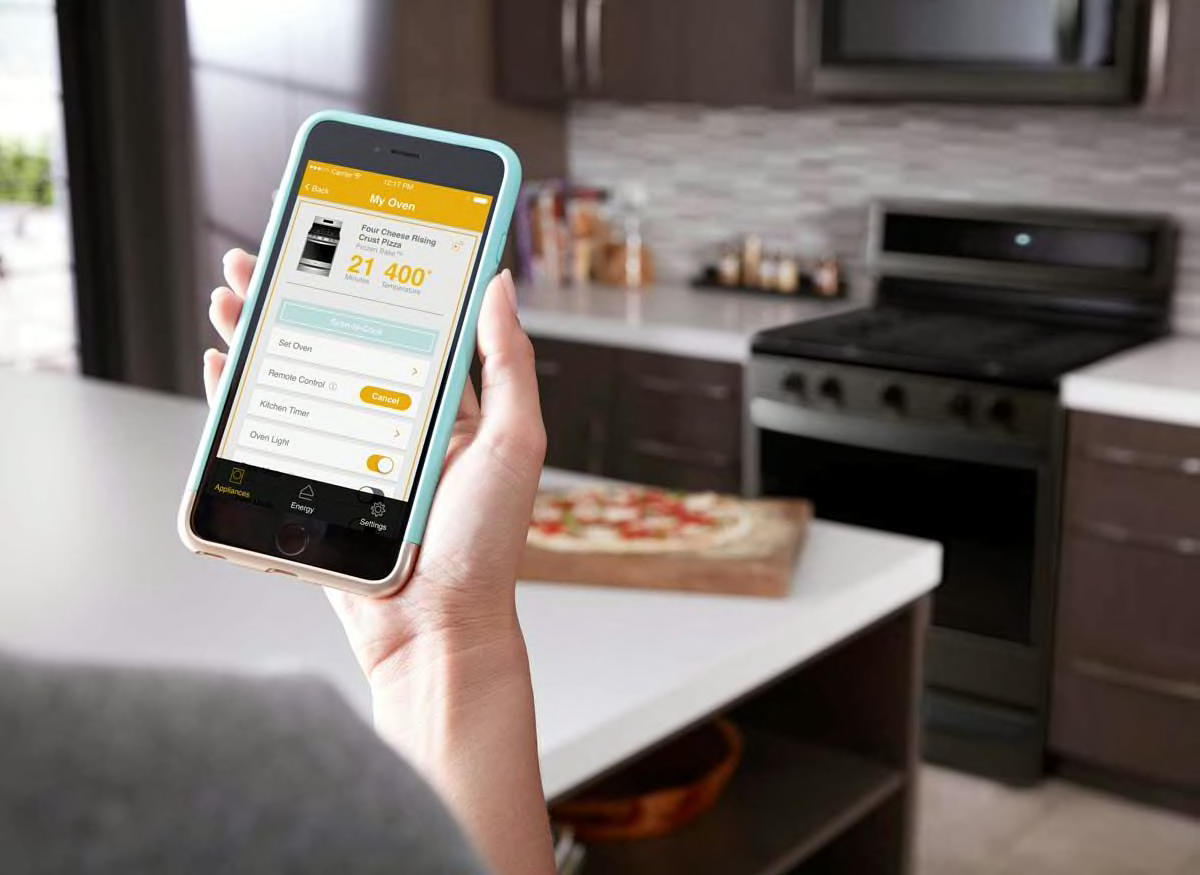
WiFi Connectivity
Most WiFi-connected ranges work with an app on your smartphone to let you check the oven temperature, set a timer, or even—if your range comes with a temperature probe—check the internal temperature of whatever you’re cooking. With electric ranges, you can preheat your oven using your phone or turn off your oven or burner remotely if you worry that you’ve left it on accidentally.
Photo: Whirlpool
Air Fryer
Almost every major range brand now has at least one model with an air-fry setting. It usually engages multiple fans to circulate hot air, much like a countertop air fryer. Some brands also include (or sell) wire mesh cooking baskets to maximize circulation, which come in handy if you’re whipping up homemade fries.
Photo: LG
Control Lockout
This feature lets you disable the electronic range controls. We recommend it if the control panel is at the front of the range. These ranges are more likely to be turned on by accident, especially if you have young children in the house.
Convection
More typically found in mid- and higher-priced ranges, a convection oven usually reduces cooking time, especially for large roasts, by using one or more fans to circulate hot air in the oven. Some ovens—typically electric models—have an extra convection heating element so that the convection fan is circulating the hottest air possible for more even results.
Convertible Oven Space
Some ranges, notably those from Samsung, have the ability to add or remove a divider between the upper and lower ovens. Samsung calls this Flex Duo, and it gives you the flexibility to switch easily between a huge baking space (for an enormous holiday roast) and a much smaller one (for a single sheet of cookies).
Photo: Samsung
Expandable Elements, Bridge, and Oval Burner
On gas cooktops, oval burners accommodate griddles and elongated pans. And some electric range tops have an elongated bridge element that spans two burners to fit a griddle or other odd-shaped cookware. Most electric radiant and induction smoothtops have an expandable burner that lets you choose the best size for your pot’s diameter.
Hot-Surface Warning Lights
This light warns you when an element is still hot. That’s particularly useful on electric radiant smoothtops and induction ranges, which don’t emit a visible flame. (Although induction burners don’t heat up on their own, touching an area where a hot pan had been recently placed can still cause a burn.) Some ranges have a warning light for each burner; others have just one.
Variable Broil
Ovens with variable broil provide adjustable low and high settings for food that needs slower or faster cooking. Most electric and gas ovens have this feature, except for some entry-level models.
WiFi Connectivity
Most WiFi-connected ranges work with an app on your smartphone to let you check the oven temperature, set a timer, or even—if your range comes with a temperature probe—check the internal temperature of whatever you’re cooking. With electric ranges, you can preheat your oven using your phone or turn off your oven or burner remotely if you worry that you’ve left it on accidentally.
Photo: Whirlpool
Kitchen Range Brands
CR’s market analysts monitor developments across more than a dozen kitchen range brands, tracking where each brand’s appliances are sold.
This midlevel mass-market appliance brand has gas and electric ranges with time-saving, high-performance features and a classic design. It also offers some of the least expensive induction ranges we’ve tested. Frigidaire ranges are available at national chains like Home Depot, Lowe’s, and Walmart, as well as smaller local appliance sellers.
This midlevel mass-market appliance brand sells gas and electric ranges often with a timeless look and modern features. GE owns several other lines that were once sold with the GE name but no longer are: Café, Monogram, and Profile. Profile ranges are a tier above regular GE appliances in terms of finish and features. Café is slightly more upscale than Profile, with some pro-style finishes. Monogram is GE’s pro-style line, made to compete with brands like Viking and Wolf. You can find GE ranges in most appliance stores, including major nationwide big-box retailers like Best Buy, Home Depot, and Lowe’s.
This high-end brand offers both gas and electric ranges at a premium price. JennAir ranges are sold at Best Buy, as well as online retailers and smaller regional stores.
This high-end brand, well-known for its stand mixers, sells a broad range of cooking appliances, including gas, electric, and induction ranges. It also has a pro-style line built to compete with the likes of Viking. You can find KitchenAid ranges at Best Buy, Home Depot, Lowe’s, and Wayfair, among many other places.
This midlevel brand sells gas, electric, and induction ranges at a variety of home centers and appliance stores, like Best Buy, Home Depot, and Lowe’s.
This midlevel brand sells gas, electric, and induction ranges. Most newer Samsung cooktops are equipped with built-in WiFi. You can find them at national chains like Lowe’s, Home Depot, and Best Buy.
This high-end brand sells a variety of cooking appliances including premium gas, electric, and induction ranges. You can find Thermador ranges at Best Buy and select independent appliance shops.
This high-end brand, which ushered in the pro-style range trend, is considered the benchmark for gourmet kitchens. The company sells gas, electric, and induction ranges and cooktops. You’ll have the most luck finding Viking ranges through local appliance sellers, but they’re also sold nationally at Best Buy.
This midlevel mass-market brand sells modestly priced gas and electric ranges. Whirlpool ranges are sold at Best Buy, Lowe’s, Home Depot, and many regional appliance stores.
















